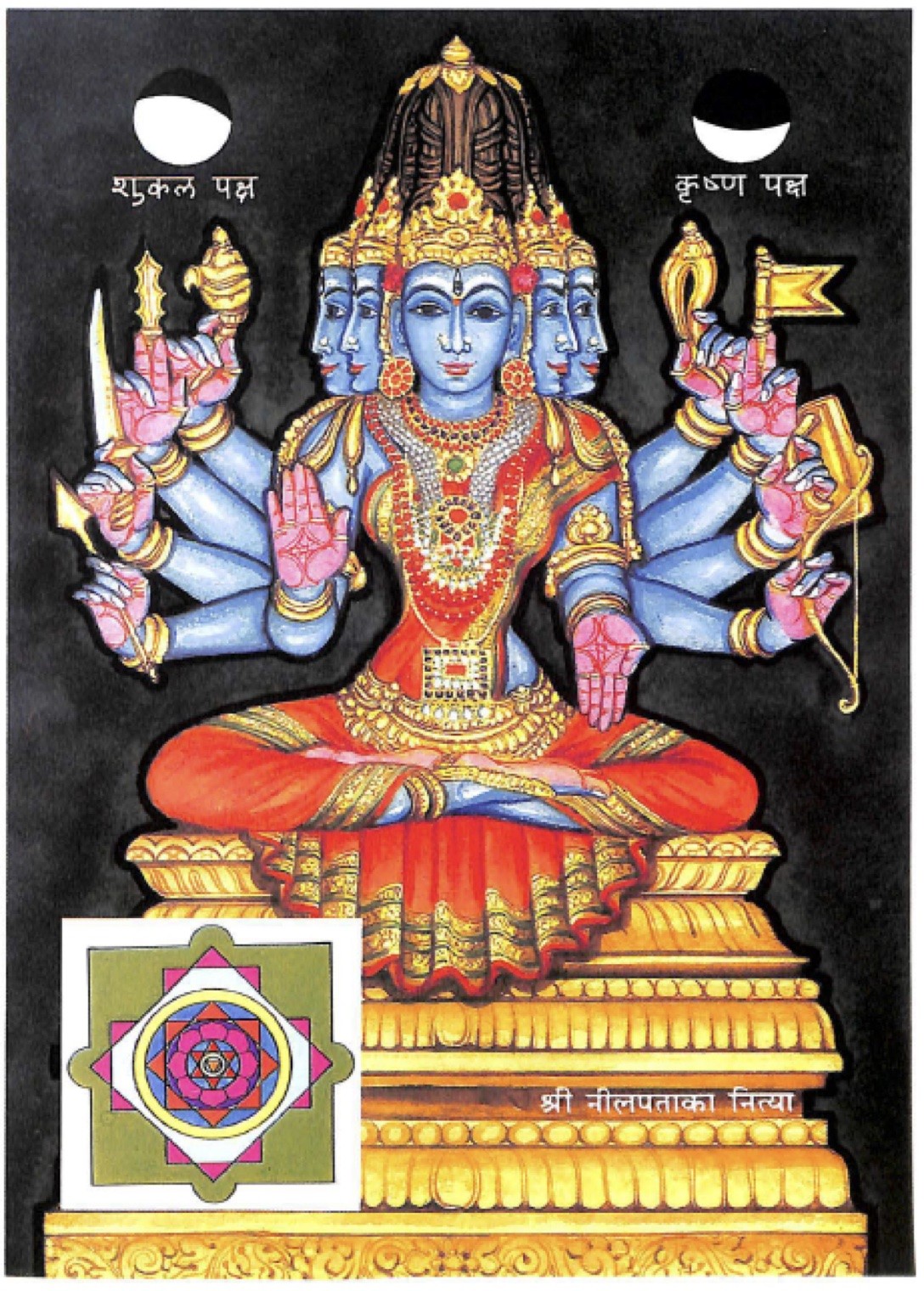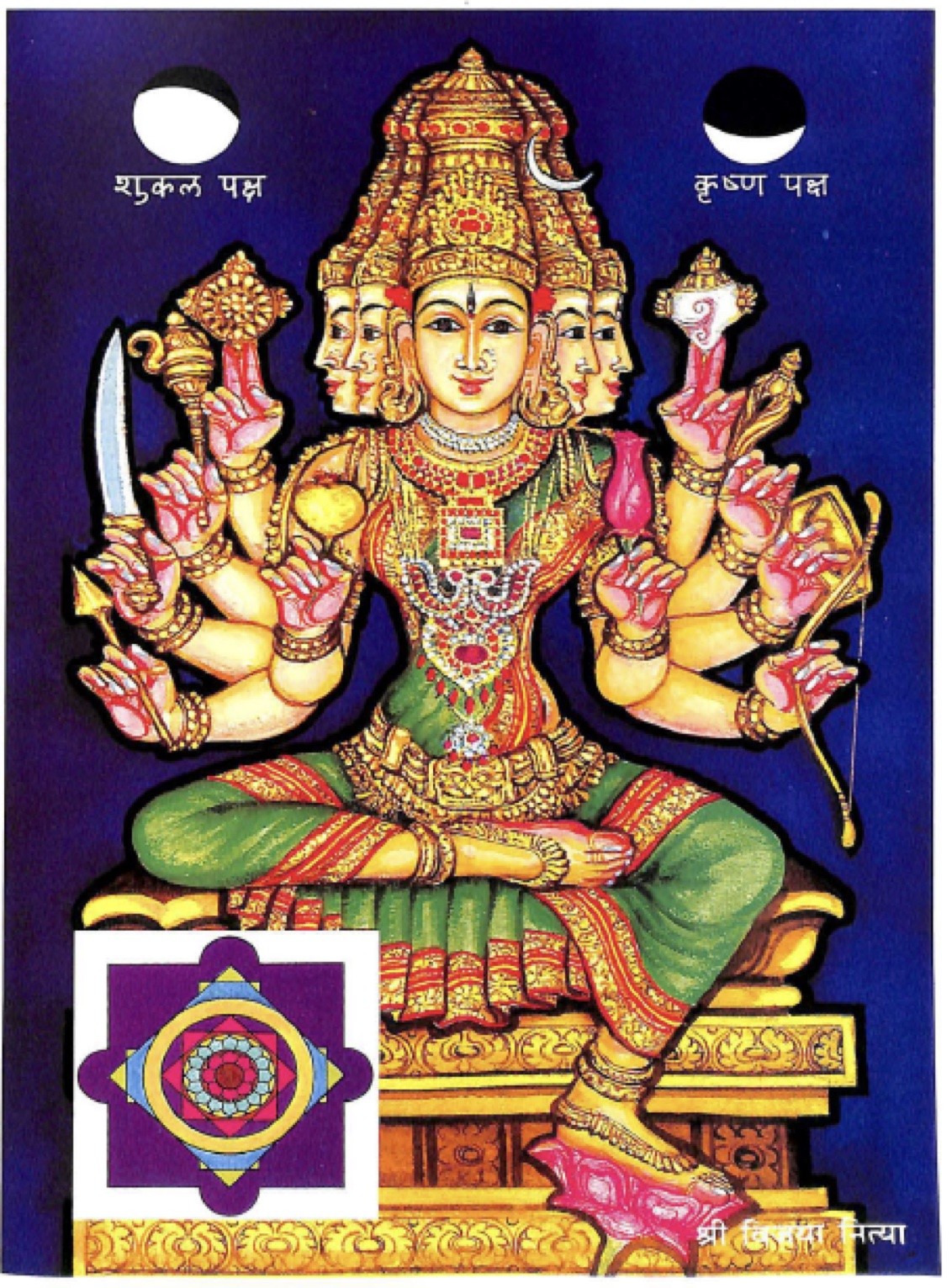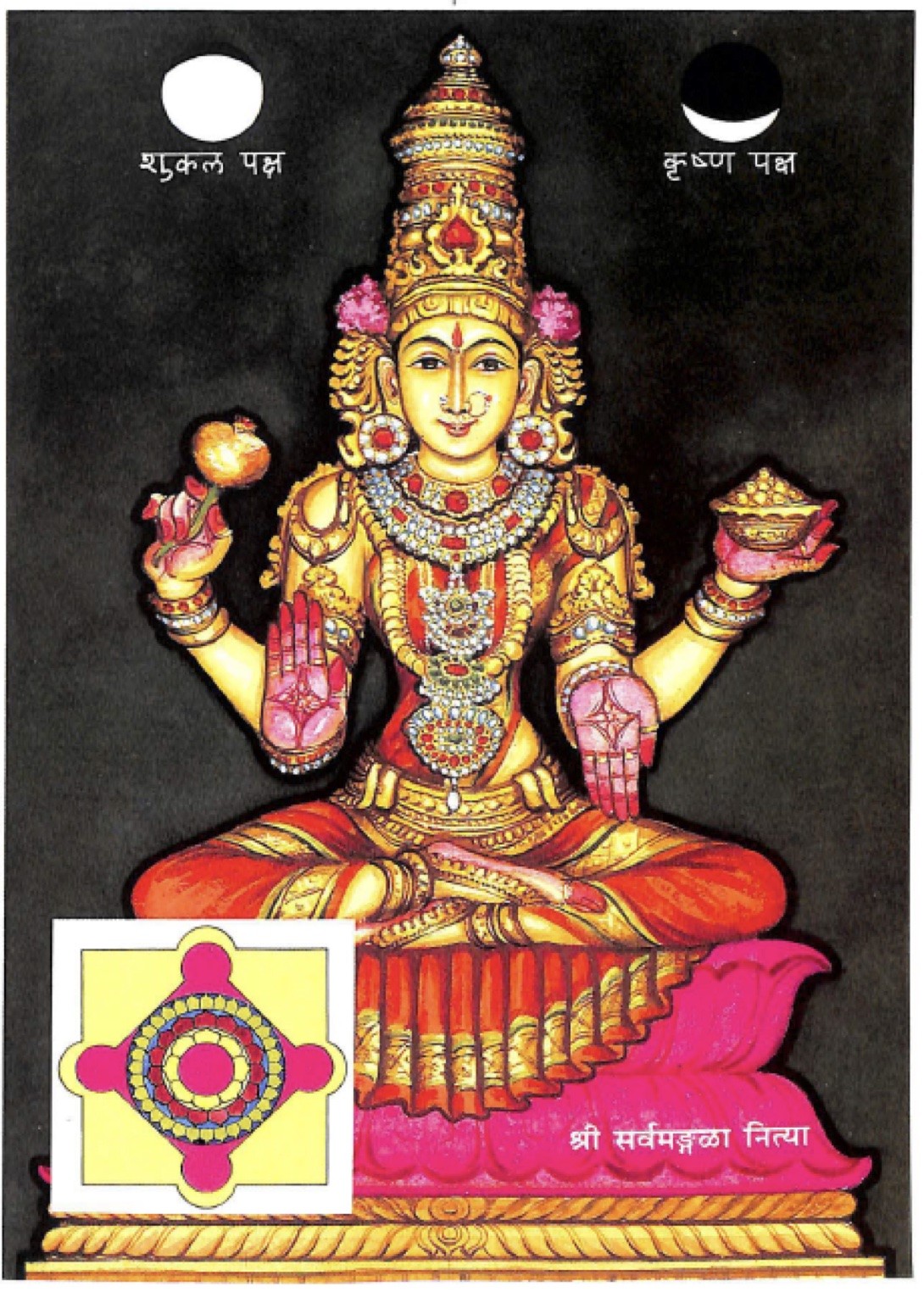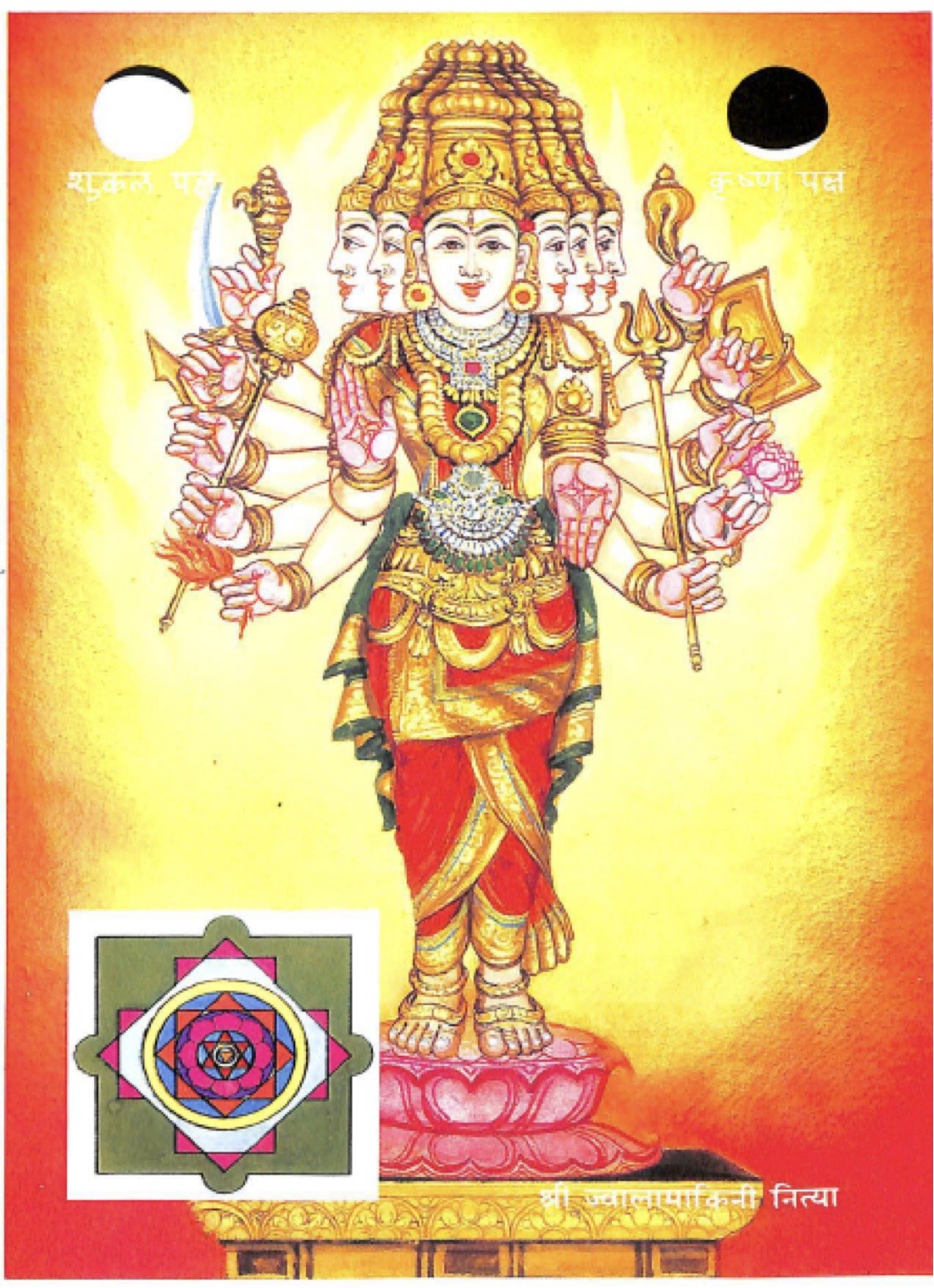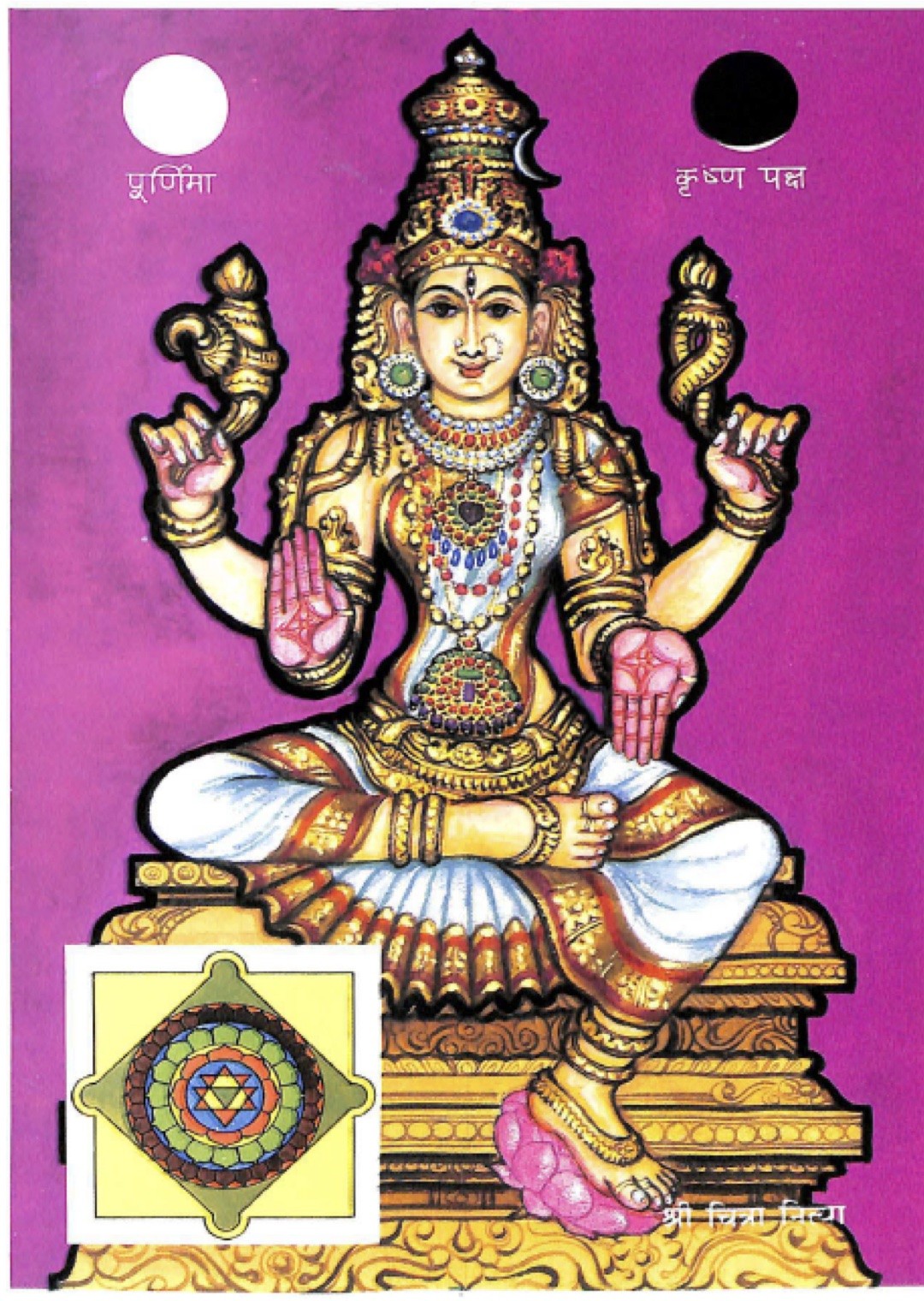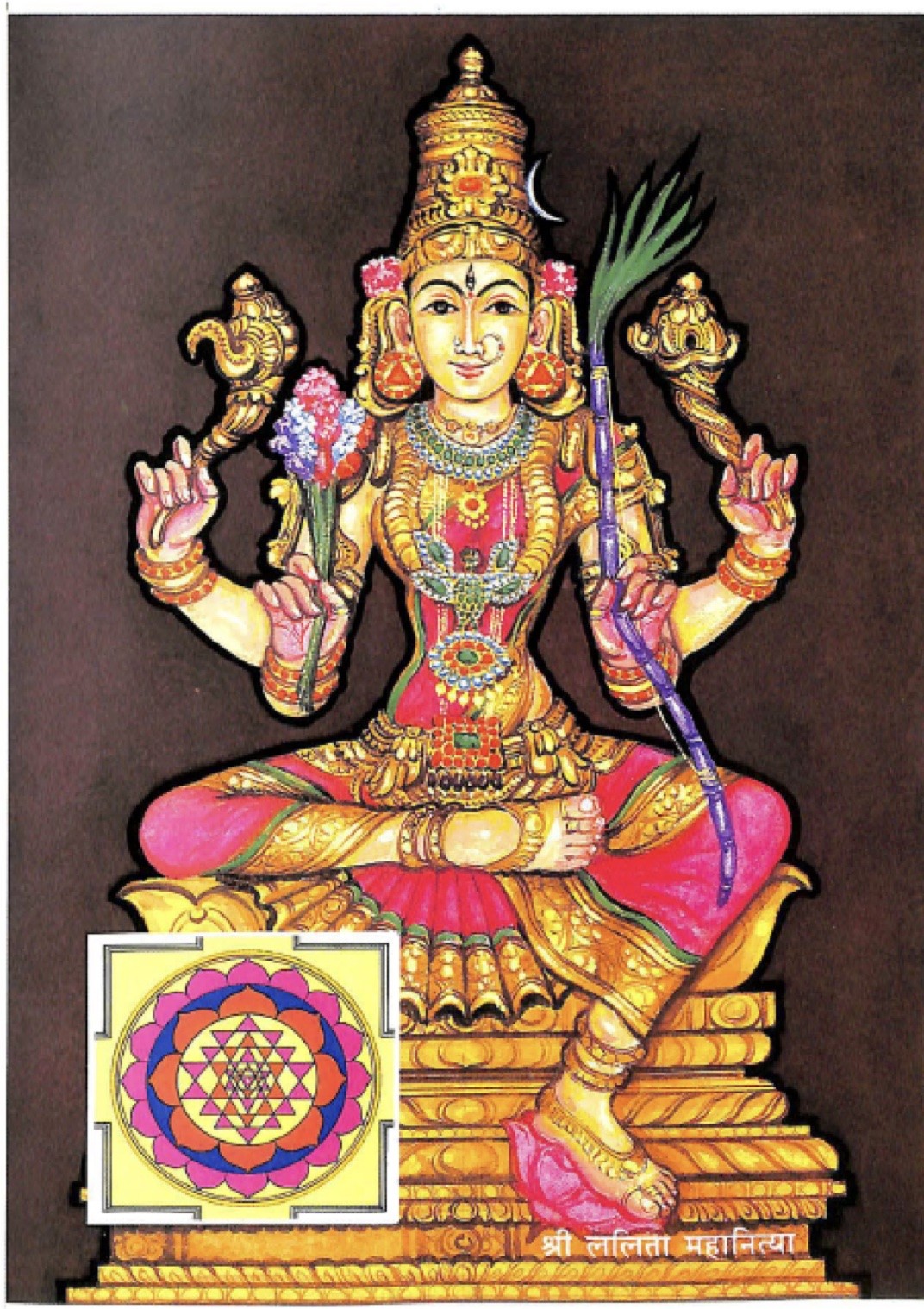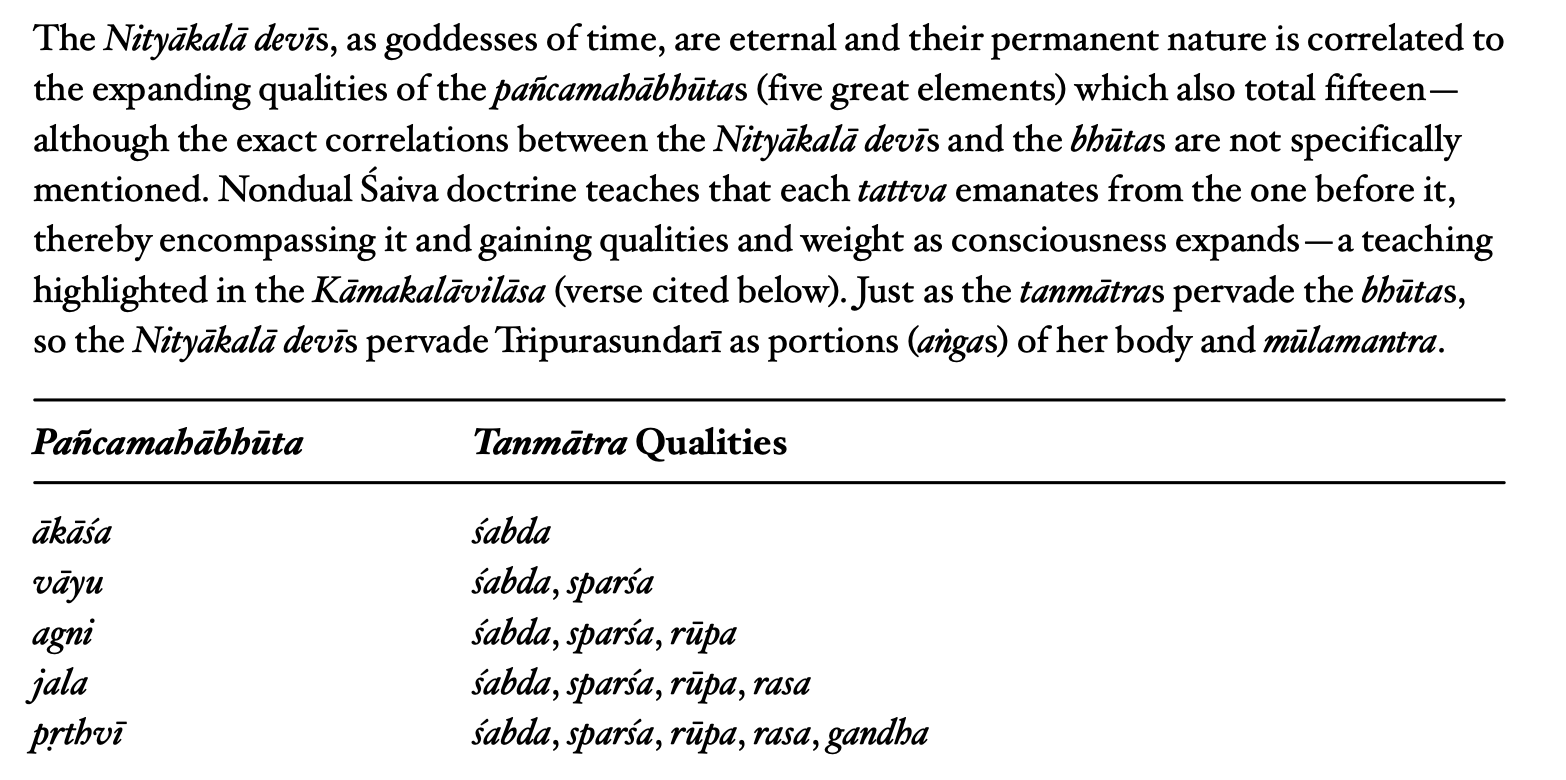And I found two more correspondences in which Mahavajreshvari appears and says why he appears...which of these 4 are correct?
Lunar Phases and Nitya Goddesses (Including Maha Vajreswari and Tripura Sundari)
From New Moon (Amavasya) to Full Moon (Poornima) - Shukla Paksha
1. Amavasya (New Moon) - Chitra (Chidroopa)
2. Pratipada (First Day) - Jwalamalini
3. Dwitiya (Second Day) - Sarvamangala
4. Tritiya (Third Day) - Vijaya
5. Chaturthi (Fourth Day) - Neelapataka
6. Panchami (Fifth Day) - Nitya
7. Shashti (Sixth Day) - Kulasundari
8. Saptami (Seventh Day) - Tvarita
9. Ashtami (Eighth Day) - Tvarita
10. Navami (Ninth Day) - Shivaduti (Roudri)
11. Dashami (Tenth Day) - Maha Vajreswari
12. Ekadashi (Eleventh Day) - Vahnivasini
13. Dwadashi (Twelfth Day) - Bherunda
14. Trayodashi (Thirteenth Day) - Nityaklinna
15. Chaturdashi (Fourteenth Day) - Bhagamalini
16. Poornima (Full Moon) - Maha Tripura Sundari
---
From Full Moon (Poornima) to New Moon (Amavasya) - Krishna Paksha
1. Poornima (Full Moon) - Maha Tripura Sundari
2. Pratipada (First Day) - Bhagamalini
3. Dwitiya (Second Day) - Nityaklinna
4. Tritiya (Third Day) - Bherunda
5. Chaturthi (Fourth Day) - Maha Vajreswari
6. Panchami (Fifth Day) - Shivaduti (Roudri)
7. Shashti (Sixth Day) - Vahnivasini
8. Saptami (Seventh Day) - Tvarita
9. Ashtami (Eighth Day) - Tvarita
10. Navami (Ninth Day) - Kulasundari
11. Dashami (Tenth Day) - Nitya
12. Ekadashi (Eleventh Day) - Neelapataka
13. Dwadashi (Twelfth Day) - Vijaya
14. Trayodashi (Thirteenth Day) - Sarvamangala
15. Chaturdashi (Fourteenth Day) - Jwalamalini
16. Amavasya (New Moon) - Chitra (Chidroopa)
---
Explanation of Changes:
Maha Vajreswari is included in this version and associated with Dashami (Tenth Day) in Shukla Paksha and Chaturthi (Fourth Day) in Krishna Paksha.
Tripura Sundari remains associated with the Full Moon (Poornima) phase.
This list now reflects all 16 Nityas with a focus on balancing their roles across the lunar phases.
And this:
Lunar Phases and Nitya Goddesses (Excluding Tripura Sundari)
From New Moon (Amavasya) to Full Moon (Poornima) - Shukla Paksha
1. Amavasya (New Moon) - Chitra (Chidroopa)
2. Pratipada (First Day) - Jwalamalini
3. Dwitiya (Second Day) - Sarvamangala
4. Tritiya (Third Day) - Vijaya
5. Chaturthi (Fourth Day) - Neelapataka
6. Panchami (Fifth Day) - Nitya
7. Shashti (Sixth Day) - Kulasundari
8. Saptami (Seventh Day) - Tvarita
9. Ashtami (Eighth Day) - Tvarita
10. Navami (Ninth Day) - Shivaduti (Roudri)
11. Dashami (Tenth Day) - Maha Vajreswari
12. Ekadashi (Eleventh Day) - Vahnivasini
13. Dwadashi (Twelfth Day) - Bherunda
14. Trayodashi (Thirteenth Day) - Nityaklinna
15. Chaturdashi (Fourteenth Day) - Bhagamalini
---
From Full Moon (Poornima) to New Moon (Amavasya) - Krishna Paksha
1. Poornima (Full Moon) - Kameshwari
2. Pratipada (First Day) - Bhagamalini
3. Dwitiya (Second Day) - Nityaklinna
4. Tritiya (Third Day) - Bherunda
5. Chaturthi (Fourth Day) - Maha Vajreswari
6. Panchami (Fifth Day) - Shivaduti (Roudri)
7. Shashti (Sixth Day) - Vahnivasini
8. Saptami (Seventh Day) - Tvarita
9. Ashtami (Eighth Day) - Tvarita
10. Navami (Ninth Day) - Kulasundari
11. Dashami (Tenth Day) - Nitya
12. Ekadashi (Eleventh Day) - Neelapataka
13. Dwadashi (Twelfth Day) - Vijaya
14. Trayodashi (Thirteenth Day) - Sarvamangala
15. Chaturdashi (Fourteenth Day) - Jwalamalini
16. Amavasya (New Moon) - Chitra (Chidroopa)
---
Why Does Maha Vajreswari Not Appear in Some Texts?
1. Variability in Tantric Traditions:
Different tantric traditions emphasize varying numbers of Nitya goddesses. Some systems prioritize only the 15 lunar phases (excluding Tripura Sundari, as her phase is considered invisible and transcendental).
In these cases, Maha Vajreswari might not be explicitly assigned to a lunar phase, as her role is more symbolic or complementary.
2. Association with Specific Energy Fields:
Maha Vajreswari is often linked with Sri Chakra geometry or specific tantric rituals, rather than directly with the phases of the moon. She might represent a higher state of energy that transcends the lunar framework.
3. Fusions or Overlaps with Other Nityas:
In some interpretations, Maha Vajreswari's attributes might be integrated into the roles of other Nityas, such as Kameshwari, Vahnivasini, or Bherunda. As a result, she may not appear as a distinct entity in certain lunar phase assignments.
4. Focus on Practical Application:
Texts that focus primarily on the lunar cycle for rituals or meditation might exclude Maha Vajreswari to maintain a simpler and more focused framework of 15 Nityas.
5. Her Role in Transcendence:
Maha Vajreswari is sometimes seen as a goddess who helps transcend physical or material boundaries. Since the lunar phases are part of the physical cosmos, her role might not always be integrated directly into this structure.
---
Conclusion:
In traditions or texts that include all 16 Nityas, Maha Vajreswari is explicitly present and assigned to a lunar phase. However, in systems focusing on 15 lunar phases, she is often excluded due to her symbolic role or her fusion with other Nityas. This variability reflects the richness and flexibility of tantric practices.
